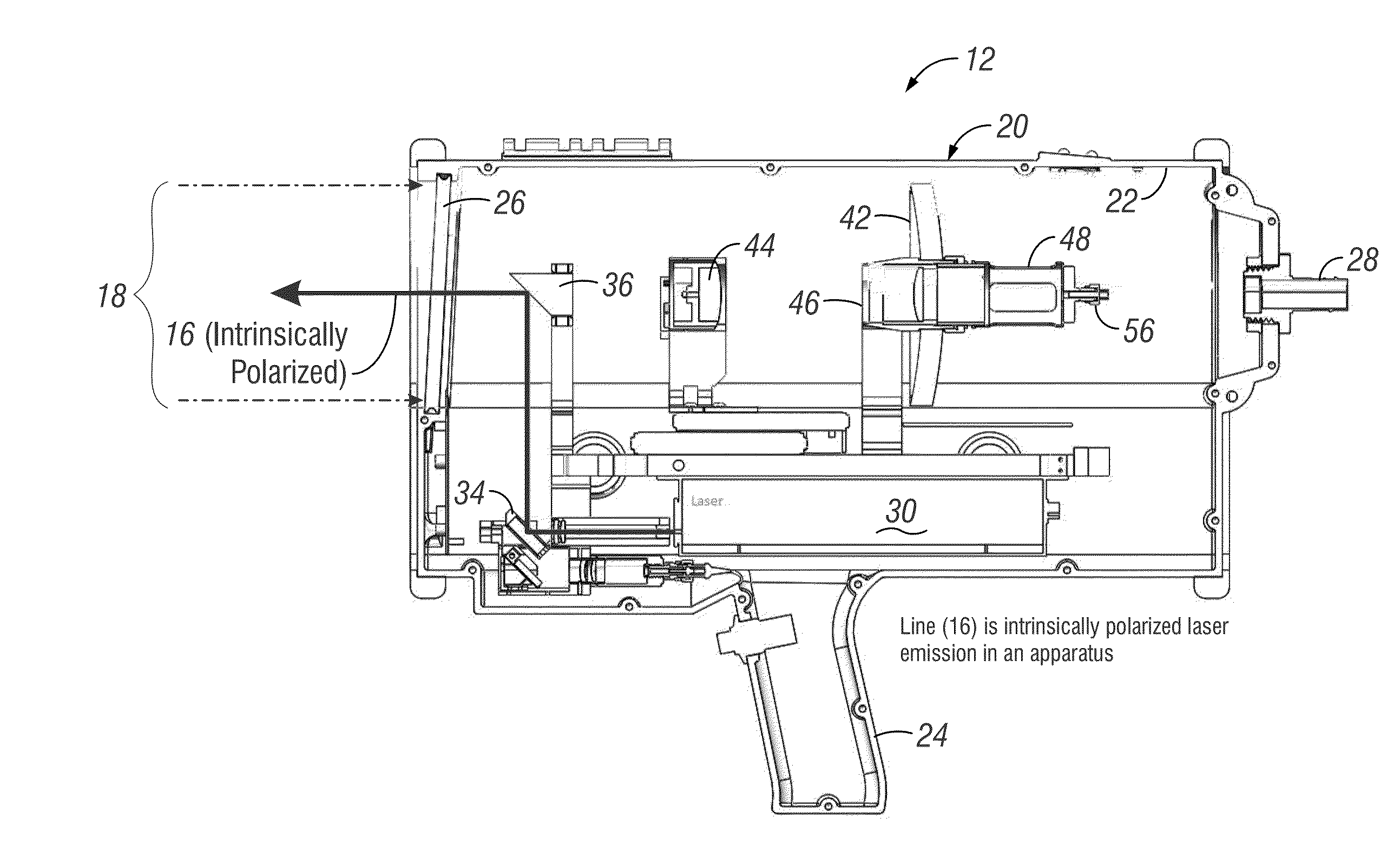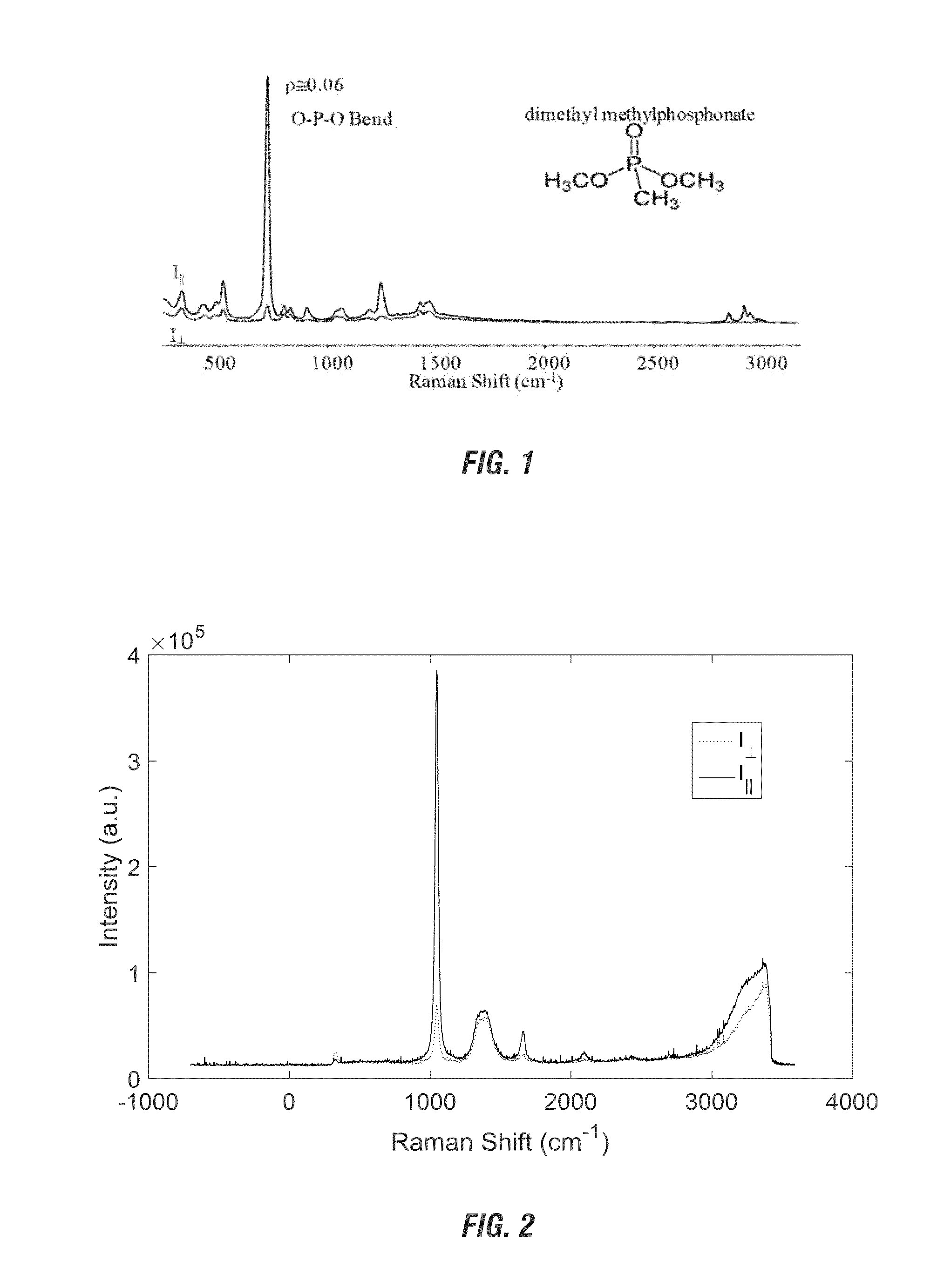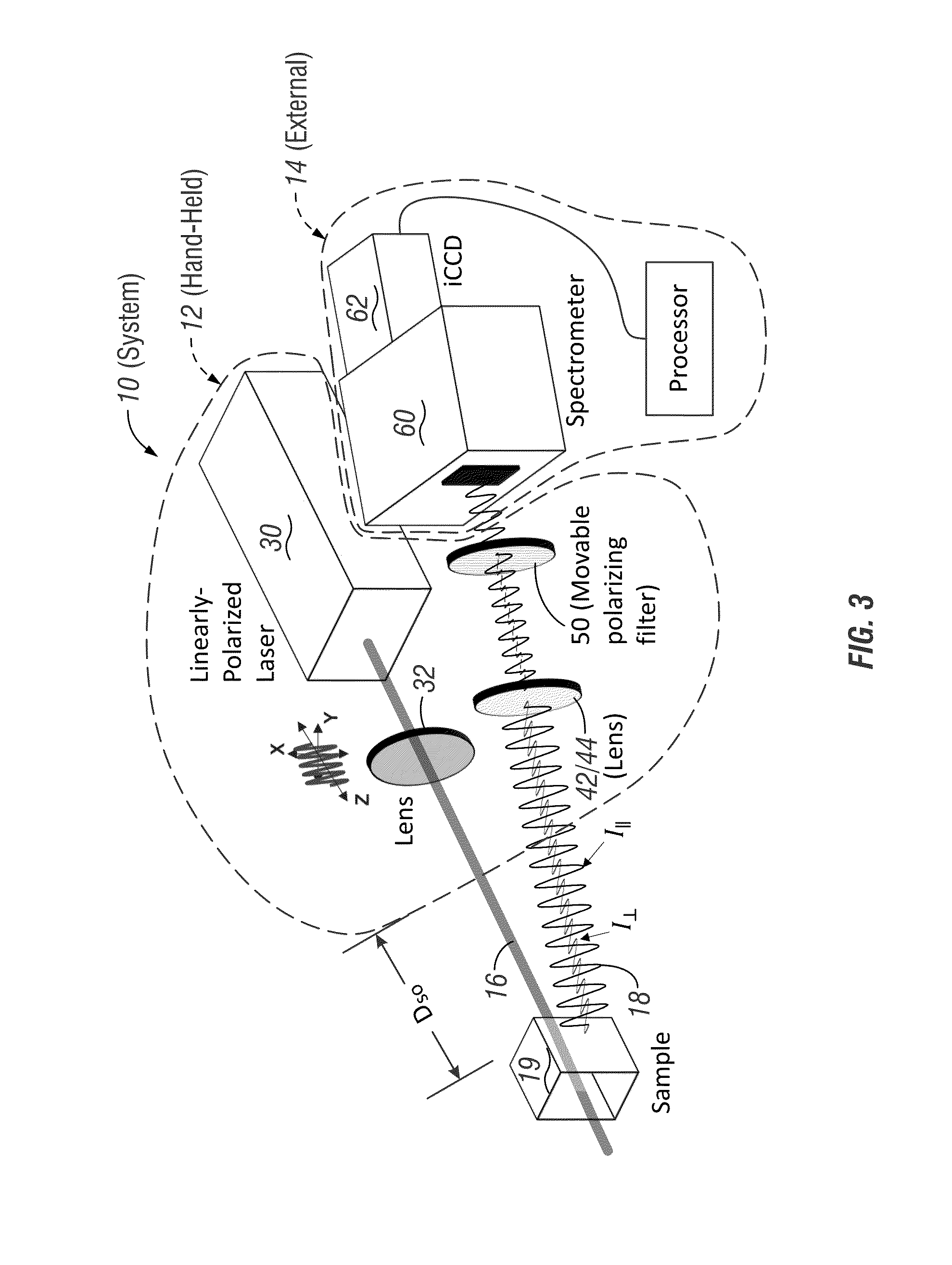Fluorescence removal from raman spectra by polarization subtraction
- Summary
- Abstract
- Description
- Claims
- Application Information
AI Technical Summary
Benefits of technology
Problems solved by technology
Method used
Image
Examples
Embodiment Construction
Overview
[0052]For a better understanding of the invention, specific forms or embodiments it can take will now be described in detail. Frequent reference will be taken to the accompanying drawings, which are itemized above. Reference numerals will be used to indicate certain parts or locations in the drawings. The same reference numerals will indicate the same parts or locations unless otherwise indicated.
[0053]These embodiments will focus upon stand-off distance detection of chemical substances with a portable detection system. However, it is to be understood that individual aspects could be implemented in different ways, at different distances, and for different applications.
[0054]The examples given are neither inclusive nor exclusive of all the forms and embodiments that aspects of the invention can take.
Method
[0055]In one aspect or embodiment, the present invention seeks to remove fluorescence from a Raman spectrum collected at a standoff distance (see, e.g., diagrammatically ill...
PUM
 Login to View More
Login to View More Abstract
Description
Claims
Application Information
 Login to View More
Login to View More - R&D
- Intellectual Property
- Life Sciences
- Materials
- Tech Scout
- Unparalleled Data Quality
- Higher Quality Content
- 60% Fewer Hallucinations
Browse by: Latest US Patents, China's latest patents, Technical Efficacy Thesaurus, Application Domain, Technology Topic, Popular Technical Reports.
© 2025 PatSnap. All rights reserved.Legal|Privacy policy|Modern Slavery Act Transparency Statement|Sitemap|About US| Contact US: help@patsnap.com



